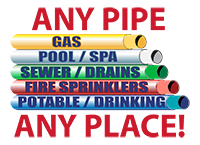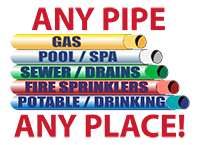So, you’ve had a relaxing soak in your bathtub with calming lavender bath salts, aromatherapy candles, mood music, and a glass of wine. Unfortunately, your bathtub won’t drain when you finish. Oh, the horror! This scenario is not only unpleasant but quite gross, too. What are you going to do with the dirty bathwater? Yikes! This situation will, unfortunately, undo all the benefits of your bathroom ritual. No one wants to deal with a clog.
If you want a quick fix, then it is time to call a professional plumber. Find one with emergency services, especially if you don’t want to stress yourself. Let’s face it; dealing with this issue means getting down and dirty. However, if you don’t have the extra cash to spare, you may want to try a DIY fix. Maybe you’ll get your tub to drain all on your own. If you are ready to find your own solution, roll up your sleeves, and prep some elbow grease. You will need to get your hands literally and figuratively dirty to get to the root of the problem.
Reasons Why Your Tub Is Not Draining
If you’ve clicked the lever of your metal stopper and the water is not draining properly or not receding at all, then there is undoubtedly a reason for this mess. Look at the top three common issues why your tub is not draining.
Faulty issues with the built-in stopper
If you have a modern tub, chances are you have a built-in stopper combo. In this scenario, your mechanism itself could be problematic. Remember, with regular wear and tear, it can become damaged as the days go by. Your hair, dead skin cells, soap scum, and other bathroom gels can also get wedged and make it stick. With this simple problem, all you need to do is take out the stopper to drain the water. You’ll find out how to do that with our detailed guide in the next segment.
A nasty clog in the tub drain
Another reason could be a clog in the drain. Remember, sediments form every time you bathe. You have falling hair, soap scum, shampoo residue, and even shaving gel going down there. At times, all this nasty gunk solidifies, causing a blockage. You may have also not noticed that you could have washed down shampoo caps, paper from your soap, or your kids’ toys the drain. As such, you may need to clear stuff out and use various gadgets like your plunger, snake, or another method to de-clog.
Deeper problems beneath the drain pipeline
If you are facing a repetitive problem, then you have an issue that lies deeper in your drain pipes. It would be cumbersome to deal with your tub that becomes clogged again and again. You are most likely tired of unclogging it using the plunger method. Don’t wait for things to escalate. This redundant issue is a major red flag that you need a professional to look at your pipes. You could have a damaged or broken pipe, which is why your problem is relentless. In this scenario, you need to call a professional plumber to conduct an inspection. Only a pro can provide the right diagnosis and offer the best plan of action for your complicated drain problem.
Remember, you must deal with any complex plumbing problem at the soonest possible time. Standing dirty water is a serious health hazard. It can attract bugs and pests. These leaky, broken pipes also become the perfect breeding ground for molds and mildew. Sometimes, this minor issue will turn out to be a deeply rooted problem that cannot be seen by your naked eyes. Don’t neglect these warning signs before it wreaks further havoc in your piping system.
DIY Fix for a Simple Drain Stopper Problem
When your tub suddenly doesn’t want to drain water, the main culprit could be the stopper. Usually, when there are no drain issues beforehand, like sluggishness, the stopper is to blame. A stopper is essential for filling up your tub, but if it becomes problematic, it can malfunction so your water will not drain out. To find out how to fix this, you must first figure out what kind of stopper you have.
Different kinds of stoppers
Five basic drain stoppers ensure water doesn’t flow down the drain when you’re in dire need of a soak. Let’s get to know what these are:
- Rubber
These are the standard stoppers that have been around since time immemorial. They form a tight seal in the hole to ensure water doesn’t drain out. This is the simplest mechanism that’s also super easy to replace.
- Plunger
You can recognize this because it comes with a handle that activates the seal. When you press it, it creates a tight seal in your drain. By pulling the handle back, you release the seal. However, if the plunger somehow becomes unattached to the mechanism, it means you can’t break the seal, so your tub won’t drain. As such, you need to find a way to reconnect the broken connection together so that the seal will budge.
- Pop-up
Similarly, your pop-up stopper comes with a lever, which you can find on the overflow drain plate. You’ll find this attached to the arm that changes the position of the stopper over the drain. It comes with a spring mechanism inside, which is in charge of releasing or sealing the stopper.
- Lift and turn
In brand new homes today, this stopper is the trendiest design. There is no lever, but there is a little knob found on top of the tub stopper itself. You simply hold that knob, lift, and turn to release the seal.
- Rollerball
This is like the one above because the handle is on the stopper itself. You use it to activate the seal. However, instead of screwing the stopper by turning, all you do is lift this to release and push it down to close. Easy peasy!
What to do with the stopper
If your traditional rubber stopper suddenly malfunctions, all you do is poke a big enough hole to drain the water. If it recedes, it means your stopper is the issue. Once the water is gone, you can take off the rubber seal completely. You can buy a new one in your hardware store.
With the rollerball or lift and turn stopper, you need to unscrew the mechanism. Turn it counterclockwise until you can pop off the seal from the drain. If it is a stopper issue, then the water will drain out easily. Later, it would help if you cleaned the stopper or replace it with a new one.
As for a lever stopper like the pop-up or plunger variant, you will need more time to work on it. Since it comes with an internal plunger, it needs more complex work to release the stuck mechanism. In this instance, you need to remove the overflow cover plate and try to lift the rod out of the overflow tube that connects to the plunger. It would be best if you used thin long nose pliers because there is little room to wiggle.
If you are having a hard time, you may use some WD-40 to provide lubrication to take out the plunger. Don’t pull the rod at an angle because it may break. Pull straight up to get the seal to break so your water can drain. If you are successful, this will help release all the water in your tub if the stopper is indeed the problem.
However, if you break the rod, you need a thin wire or drain snake to move the stopper. In this instance, you will have no choice but to remove your whole drain-and-overflow pipe to replace the broken mechanism. At this juncture, it would be advisable to seek the help of a professional.
Steps to Unclog a Tub Drain
Now, if you have worked on the stopper and the water is still not draining, it shows that you have a bigger drainage issue. The first order of business is to wait for the water to drain out slowly. However, if it is stagnant and not receding at all, you need a bucket to drain out the water. Yes, it is gross, but you must do it! There is no other way to deal with standing water.
Wear rubber gloves and begin scooping out water with a pail. Make sure to layout old shirts and towels on your bathroom floors. This will prevent any nasty accidents because you may drip water all over your floor. Best to be safe than sorry!
After scooping the water into the bucket, dump the contents inside your toilet. You may need to repeat this process until your tub is almost empty. When you can no longer get water into the bucket, you can stop this procedure. After this, you can now begin working on the clog.
When your drain is clogged, it means you’ve got a lot of debris in there. If it is a simple issue, then you can probably do it without a professional plumber. Attempting an easy fix can help save you money. Here are some ways to unclog your bathtub drain by yourself:
Step 1: if you haven’t, take out the drain stopper.
Step 2: Wear your gloves and take out any visible signs that block the drain. It could be hair, sediments, soap scum, etc. Usually, you can see this nasty stuff when you peek in there with a flashlight. It is normal for big hairballs to form underneath.
Step 3: Get a plunger because you’re going to work on that drain. Make sure the overflow cover is out. Then stuff a towel or old rag into the hole. This ensures that no air particles escape while you are plunging. Give it several plunges, then take out the towel to test things out. If water begins draining, you will hear it, and you will know that you’ve successfully unclogged it. It would be best to let hot water run through the drain to clear out any remaining debris that’s clinging onto the pipes.
Step 4: If you’ve got a bigger issue, then you may need a plumbing snake. This long slithery contraption can readily fit down your drain to dislodge whatever is stuck there. You can buy this in any hardware or home improvement store. Push the snake until you feel some resistance. When you reach this part, it means you’ve found the culprit. Poke it in by turning counterclockwise, then try to fish it out. If you can’t do it, it may be time to call in the pros.
Step 5: You can also try using drain solvents to see if it will loosen up the plug, be mindful because these chemical compounds are hazardous. Make sure you wear gloves, protective goggles, and a mask, so you don’t inhale the fumes or burn your skin. You can also try a traditional mixture of vinegar, hot water, and baking soda to see if it will work.
Seek Help From a Reputable Professional
If you’ve tried everything, but your bathtub won’t drain, you have no other choice but to call in a reputable plumber. Since you are welcoming a stranger into your home, you want to contact a firm like San Diego Plumbing and Pipelining. We vet our plumbers with a complete background check. Our firm also possesses the proper license, accreditation, and insurance to keep you and our staff protected.
Remember, complex drain, and pipe issues require the right tools and breadth of experience that an ordinary homeowner like you doesn’t possess. At San Diego Plumbing and Pipelining, we aim to provide premium service that won’t break your pocketbook. Apart from skilled technicians, we use quality materials to ensure that repairs are durable. We know you dislike downtimes; we do, too. We also hate back jobs, so we do our work right so you can continue living in comfort.








